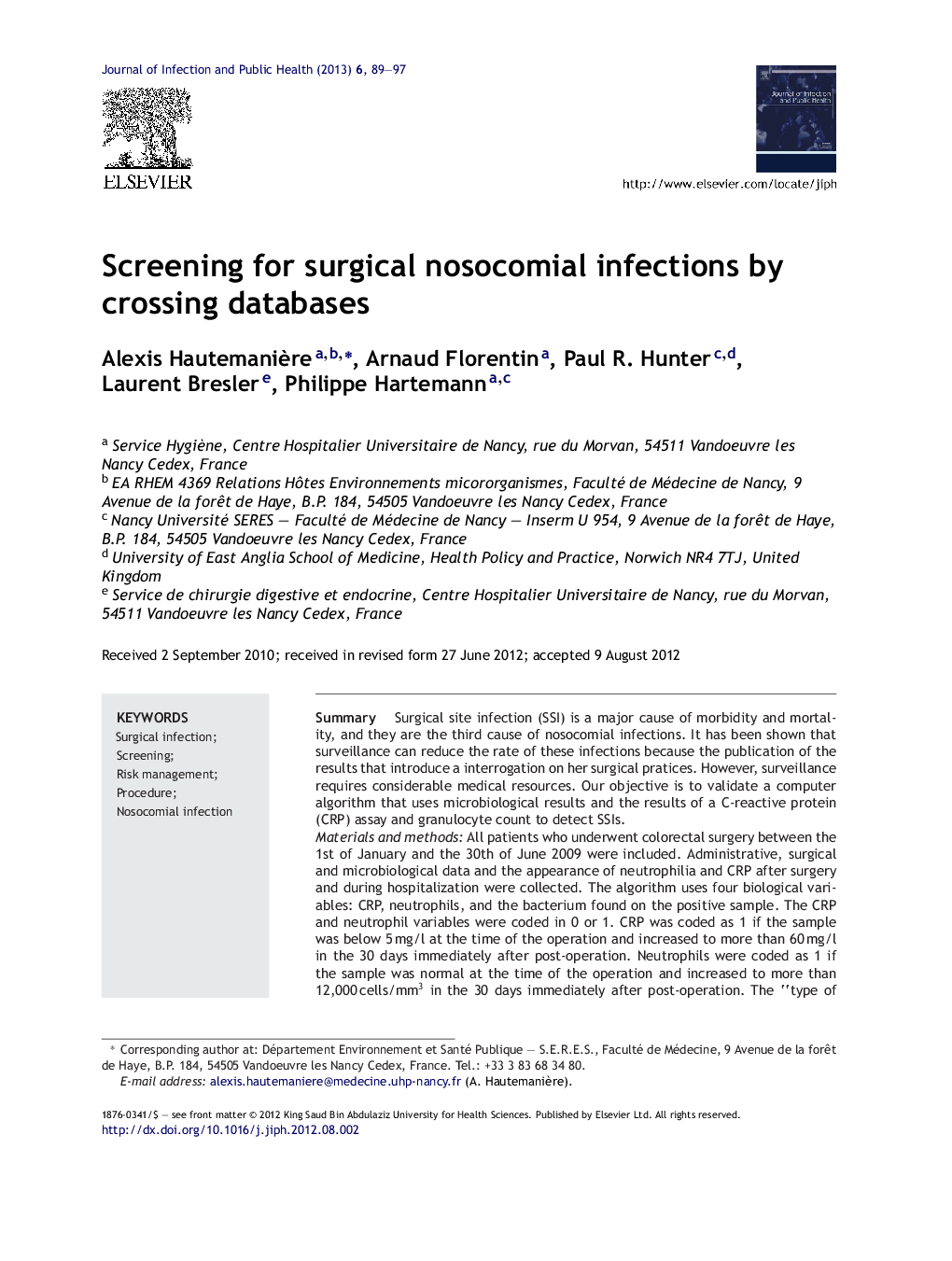| Article ID | Journal | Published Year | Pages | File Type |
|---|---|---|---|---|
| 3405882 | Journal of Infection and Public Health | 2013 | 9 Pages |
SummarySurgical site infection (SSI) is a major cause of morbidity and mortality, and they are the third cause of nosocomial infections. It has been shown that surveillance can reduce the rate of these infections because the publication of the results that introduce a interrogation on her surgical pratices. However, surveillance requires considerable medical resources. Our objective is to validate a computer algorithm that uses microbiological results and the results of a C-reactive protein (CRP) assay and granulocyte count to detect SSIs.Materials and methodsAll patients who underwent colorectal surgery between the 1st of January and the 30th of June 2009 were included. Administrative, surgical and microbiological data and the appearance of neutrophilia and CRP after surgery and during hospitalization were collected. The algorithm uses four biological variables: CRP, neutrophils, and the bacterium found on the positive sample. The CRP and neutrophil variables were coded in 0 or 1. CRP was coded as 1 if the sample was below 5 mg/l at the time of the operation and increased to more than 60 mg/l in the 30 days immediately after post-operation. Neutrophils were coded as 1 if the sample was normal at the time of the operation and increased to more than 12,000 cells/mm3 in the 30 days immediately after post-operation. The “type of sample” and “bacterium” variables were coded in categories. For the type of sample, we coded 3 if the sampling site was related to the surgical site, 2 if the sampling site was potentially linked to the surgical site, 1 if the sampling site was not directly or indirectly related to the surgical site and 0 if there was no sample. Regarding the bacteria, we coded 3 for bacteria found in over 5% of SSIs, 2 for bacteria found in 2–5% of SSIs, 1 for bacteria found in less than 2% of SSIs and 0 if there were no bacteria. The algorithm calculates a score from 1 to 5.ResultsOur study included 195 operations, out of which it was possible to study 168. Following the operations, we found neutrophilia above 12,000 cells/mm3 in 41.5% of cases and CRP above 60 mg/l in 64.6% of cases. Thirty-seven operations (22%) were complicated by an SSI. The positive predictive values and the negative predictive values in our algorithm were 74.07% and 87.94%, respectively, and the number of records that remain to be investigated is 27 out of 168.ConclusionsLinking databases from bacteriology and biology with those containing the hospital records of surgical procedures is a simple method for identifying surgical nosocomial infections.
► Quality of Surgical site infection surveillance is surgeon dependant. ► The informatique system are many informations that the infection prevention and control team are need for the surveillance of SSI. ► The dataming can be interesting for analysis a great number of data. ► The paper give the result of dataming using of for a surveillance of Surgical site infection.
